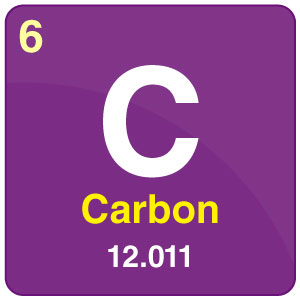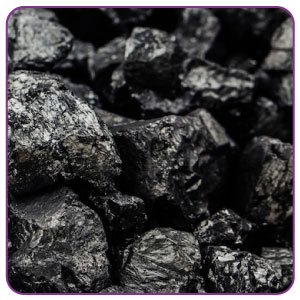Carbon

| Symbol | C |
| Atomic Number | 6 |
| Atomic Mass | 12.011 |
| Discovered | Lavoisier proposed carbon in 1789 |

The Atomic number of Carbon is 6.
Table of Contents
- Chemical Properties of Carbon
- What is Carbon
- Existance of Carbon
- Properties of Carbon
- Uses of Carbon
Chemical Properties of Carbon
| Group | 14 | Melting point | Sublimes at 3825°C, 6917°F, 4098 K |
| Period | 2 | Boiling point | Sublimes at 3825°C, 6917°F, 4098 K |
| Block | p | Density (g cm−3) | 3.513 (diamond); 2.2 (graphite) |
| Atomic number | 6 | Relative atomic mass | 12.011 |
| State at 20°C | Solid | Key isotopes | 294Ts |
| Electron configuration | [He]2s2 2p2 | CAS number | 87658-56-8 |
| ChemSpider ID | – | ChemSpider is a free chemical structure | |
What is Carbon?
- Carbon is an element represented by C, it belongs to the 14th period in the periodic table.
- The atomic number of carbon is 6 and the atomic mass is 12.01gmol-1.
- Carbon is a nonmetal and tetravalent i.e has 4 electrons in the valence shell.
- According to the data, it is the seventeenth most abundant element found on earth. It is found in the minerals of most metals in the form of carbonates.
- Carbon is the 2nd most abundant element in the human body.
Existence of Carbon
- Carbon has three naturally occurring isotopes namely C-12, C-13 and C-14. C-12 is the most abundant whereas C-14 is radioactive and used for carbon dating.
- Atomic carbon is short-lived but it is stabilised by allotropic forms. Carbon has three allotropes namely diamond, graphite and amorphous form. The properties of these allotropes are different due to the different arrangements of C atoms inside them.
- The most common oxidation state of carbon is +4. It can also form +2 and 0 oxidation states in inorganic compounds and carbonyls.
Properties of Carbon
- The electronic configuration of C is 1s2 2s2 2p2. So it is tetravalent and can form four covalent bonds.
- Catenation is the special feature of carbon by which it can form long-chain compounds. C-C bonds are non-polar and stronger.
- Carbon products are obtained by heating coal, natural gas or wood or bone at elevated temperatures in the presence of insufficient oxygen to allow combustion.
- Carbon reacts with oxygen to form carbon oxides at elevated temperatures and can steal oxygen from metal oxides to leave only the elemental metal.
- Most forms of carbon are comparatively unreactive.
- Most of the fuel is made up of carbon and its compounds. When carbon burns in the presence of oxygen, it produces heat and light. This process of burning carbon and its compounds to release energy is known as combustion.
- Carbon mainly takes part in the four main types of reaction such as oxidation reactions, addition reactions, substitution reactions and combustion reactions.
Uses of Carbon
- One of the most amazing properties of carbon is its ability to make long carbon chains and rings. This property of carbon is known as catenation.
- Carbon has many special abilities amongst one unique ability is that carbon forms pπ-pπ bonds which are nothing but double or triple bonds with itself and with other electronegative atoms like oxygen and nitrogen.
- Just because of these two properties of carbon i.e catenation and multiple bond formation, it has a number of allotropic forms.


Comments